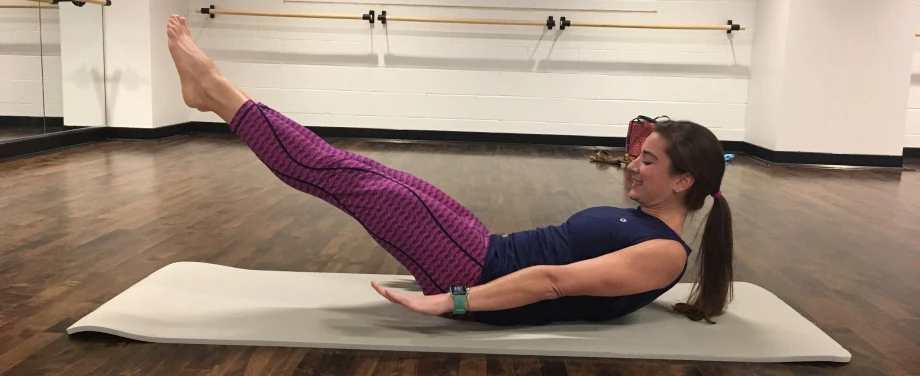Mary Jean McKinnon, PTA
Just over a year ago, I decided to begin a new exercise routine and took my first Pilates class. As I look back, it’s simply not possible to ignore the impact of Pilates. My focus during class and after has resulted in strength gains, decreased pain and numbness, improved posture, and enhanced sports performance.
INCREASED STRENGTH, DECREASED PAIN
When I began taking Pilates, I was having some upper trapezius pain and numbness in my foot while working with patients. As my abdominal strength improved, I focused on engaging my core to improve my body mechanics and posture at work. Before Pilates, I didn’t have the strength to properly initiate control of my core. At work I ensured my back stayed reasonably flat and my shoulders were back and down. When performing household chores or while driving, I maintained appropriate body mechanics and posture. It took quite a bit of thought, but the strength gains and postural adjustments paid dividends. My foot doesn’t go numb anymore and I rarely experience any upper trapezius pain.

SHAVING OFF THE SECONDS
In addition to decreasing pain and numbness, my running pace has improved. Since taking Pilates my outside running pace is 15 seconds faster per mile for 3.5 miles. On the treadmill, my pace is easily 30 seconds faster per mile. While running I’ve focused on activating my core, incorporating a slight forward bend to engage the gluteus muscle group and pushing off at the end of my stride. These technique changes and muscle activation changes align with the muscles built in Pilates. I recently finished a half marathon and improved my pace by about 15 seconds per mile while unable to breathe through my nose. Hopefully, the next one will be even better!
FOCUS IN CLASS & HOW I GOT THERE
While in Pilates class, I made an effort to focus on technique, to engage the correct muscles and to keep exercise pain free. When concentrating on technique, I tried to listen to the instructor’s cues. The technique awareness also helped me ensure I was utilizing the correct muscles.
Throughout the majority of exercises, I focused on transverse abdominis and multifidus activation. These muscles are your core muscles. The transverse abdominis is located between the ribs and pelvis in the abdomen and, when contracted, it draws the abdomen in and elongates the spine. Multifidus muscles are small rotator muscles which span 3-5 vertebrae. When the multifidus are contracted in sitting or standing they also elongate the spine.
One of the other muscle groups I focused on activating during Pilates class is the gluteus muscle group. They span the back of the hips and, as a runner, my hamstrings are always over-activated. Focusing on squeezing my glutes instead of my hamstrings was important to help with my running stride. Hip strengthening and hip muscle utilization while running decreases iliotibial band issues.
Finally, while doing upper extremity exercises, I kept my shoulders back and down. I wanted to strengthen without over activating the upper trapezius and the levator scapulae, which are common culprits of neck pain. While in class I also tried to listen to my body, decreasing resistance or adjusting my technique if I felt pain.
I’ve not only improved my athletic performance and posture as a result of Pilates, but I’ve enjoyed the social aspect, as well. Meeting others who have similar interests through Pilates has given me another social outlet. I hope you enjoy Pilates as much as I do!
Mary Jean McKinnon, PTA, is a physical therapist assistant with OrthoCarolina’s Eastover office.
KEEP READING
More from Mary Jean: Thoughts After My First Pilates Class
After high impact workouts, sometimes your body just needs a break: Why Low Impact Exercise Is Important
Pilates is one form of movement that keep your discs, ligaments, muscles and joints healthy: Who's Got Your Back
Back




Leave a Comment